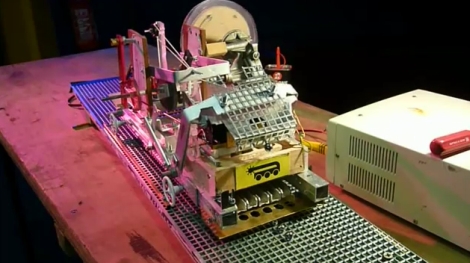
Although spring keeps trying to break through the winter doldrums you might be looking for just one more weekend activity before the outdoor season begins. Grab the kids and give this paper gyroscope a try.
It’s not an electronic sensor made of paper, but the modern equivalent of a spinning top. The frame remains stationary while the center assembly spins at high speed, keeping the whole thing balanced on one narrow point. [Dombeef] put together a printable template which you can use to make your own parts. He got a hold of the heavy paper that’s used to hold X-ray film, but you can just trace out multiple copies of the parts and make a beefy section by laminating them together with glue. Combine the inner and outer parts using a paper clip as the axis and you’re ready to go. Pull hard on a bit of floss wound around the axis to get the center frame spinning, then sit back and see how long it will remain standing.
















